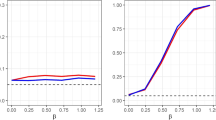Abstract
It is common for clinical data in survey trials to be incomplete and inconsistent for several reasons. Inconsistent data occur when more than one set of exclusive alternative questions are answered. One objective of this study was to identify and eliminate inconsistent data as an important data mining preprocessing step. We define three types of incomplete data: missing data due to skip pattern (SPMD), undetermined missing data (UMD), and genuine missing data (GMD). Identifying the type of missing data is another important objective as all missing data types cannot be treated the same. This goal cannot be achieved manually on large data of complex surveys since each subject should be processed individually. The analyses are accomplished in a mathematical framework by exploiting graph theoretic structure inherent in the questionnaire. An undirected graph is built using mutually inconsistent responses as well as its complement. The responses not in the largest maximal clique of complement graph are considered inconsistent. This guarantees removing as few responses as possible so that remaining ones are mutually consistent. Further, all potential paths in questionnaire’s graph are considered, based on the responses of subjects, to identify each type of incomplete data. Experiments are conducted on MESA data. Results show 15.4 % GMD, 9.8 % SPMD, 12.9 % UMD, and 0.021 % inconsistent data. Further utility of the approach is using a) the SPMD for data stratification, and b) inconsistent data for noise estimation. Proposed method is a preprocessing prerequisite for any data mining of clinical survey data.



Similar content being viewed by others
References
Ambler G, Omar RZ, Royston P (2007) A comparison of imputation techniques for handling missing predictor values in a risk model with a binary outcome. Stat Methods Med Res 16:277–298
Arslanturk S, Siadat MR, Ogunyemi T, Sethi I, Diokno A (2011) Comparison of feature selection techniques using fully controlled simulation based datasets. In: 2nd international conference on information management and evaluation, Toronto, Canada, pp 18–23
Beale EML, Little RJA (1975) Missing values in multivariate analysis. J R Stat Soc 37:129–145
Cohen WW (1995) Fast effective rule induction. In: Twelfth international conference on machine learning, Lake Tahoe, CA, pp 115–123
Dillman DA, Baxter LC, Jackson A (1999) Skip-pattern compliance in three test forms: a theoretical and empirical evaluation. The social and economic sciences research center technical report number: 99-01
Diokno AC, Brock BM, Brown MB et al (1986) Prevalence of urinary incontinence and other urological symptoms in the noninstutionalized elderly. J Urol 136:1022
Diokno AC, Brown MB, Brock BM et al (1988) Clinical and cystometric characteristics of continent and incontinent noninstitutionalized elderly. J Urol 140:567
Diokno AC, Sampselle CM, Herzog AR et al (2004) Prevention of urinary incontinence by behavioral modification program: a randomized, controlled trial among older women in the community. J Urol 171:1165
Fagan J, Greenberg BV (1988) Using graph theory to analyze skip patterns in questionnaires. Bureau of the census, statistical research division report series, SRD research report number: census/SRD/RR-88/06
Hall MA (1999) Correlation-based feature subset selection for machine learning. Dissertation, The University of Waikato Thesis
Heijden G, Donders A, Stijnen T, Moons K (2006) Imputation of missing values is superior to complete case analysis and the missing-indicator method in multivariable diagnostic research: a clinical example. J Clin Epidemiol 59:1102–1109
Jerez JM, Molina I et al (2010) Missing data imputation using statistical and machine learning methods in a real breast cancer problem. Artif Intell Med 50:105–115
Junninen H, Niska H, Tuppurainen K, Ruuskanen J, Kolehmainen M (2004) Methods for imputation of missing values in air quality data sets. J Atmos Environ 38:2895–2907
Lenderking WR, Nackley JF, Anderson RB, Testa MA (1996) A review of the quality of life aspects of urinary urge incontinence. J PharmacoEconomics 9:11–23
Little RJA, Rubin DB (1987) Statistical analysis with missing data. Wiley, New York
Manca A, Palmer S (2005) Handling missing data in patient-level cost-effectiveness analysis alongside randomised clinical trials. Appl Health Econ Health Policy 4:65–75
Penny KI, Chesney T (2006) Imputation methods to deal with missing values when data mining trauma injury data. In: 28th international conference on information technology interfaces, Cavtat, Croatia, pp 213–218
Ouzienkio V, Obradovic Z (2014) Imputation of missing links and attributes in longitudinal social surveys. J Mach Learn 95(3):329–356
Li Yuanyuan, Parker LE (2014) Full length article: nearest neighbor imputation using spatial-temporal correlations in wireless sensor networks. J Inf Fusion 15:64–79
Zhang C, Zu Y, Zhang J, Zhang S (2006) Clustering-based missing value imputation for data preprocessing. In: International conference on industrial informatics, Singapore, pp 1081–1086. doi:10.1109/INDIN.2006.275672
Zhong H (2009) The impact of missing data in the estimation of concentration index: a potential source of bias. Eur J Health Econ 11:255–66. doi:10.1007/s10198-009-0170-5
Acknowledgments
The project described was supported by Grant Number R01AG038673 from the National Institutes of Health. The content is solely the responsibility of the authors and does not necessarily represent the official views of the National Institute on Aging or the National Institutes of Health.
Author information
Authors and Affiliations
Corresponding author
Additional information
This work was supported in part by NIH Grant# R01AG038673.
Rights and permissions
About this article
Cite this article
Arslanturk, S., Siadat, MR., Ogunyemi, T. et al. Analysis of incomplete and inconsistent clinical survey data. Knowl Inf Syst 46, 731–750 (2016). https://doi.org/10.1007/s10115-015-0850-7
Received:
Revised:
Accepted:
Published:
Issue Date:
DOI: https://doi.org/10.1007/s10115-015-0850-7




